 W
WThis is a timeline of Australian inventions consisting of products and technology invented in Australia from pre-European-settlement in 1788 to the present. The inventions are listed in chronological order based on the date of their introduction.
 W
WA cardiac pacemaker, is a medical device that generates electrical impulses delivered by electrodes to cause the heart muscle chambers to contract and therefore pump blood; by doing so this device replaces and/or regulates the function of the electrical conduction system of the heart.
 W
WAtomic absorption spectroscopy (AAS) and atomic emission spectroscopy (AES) is a spectroanalytical procedure for the quantitative determination of chemical elements using the absorption of optical radiation (light) by free atoms in the gaseous state. Atomic absorption spectroscopy is based on absorption of light by free metallic ions.
 W
WThe Australian Stock Saddle is a saddle in popular use all over the world for activities that require long hours in the saddle and a secure seat. The saddle is suitable for cattle work, starting young horses, everyday pleasure riding, trail riding, endurance riding, polocrosse and is also used in Australian campdrafting competitions and stockman challenges.
 W
WAn Australian work boot is a style of work shoe, typically constructed with a leather upper bound together with elastic sides and pull tabs on the front and back of the boot. The shoe lacks a tongue, and laces, and often contains a steel toe cap for occupational health and safety reasons. When the shoe contains a steel cap they are often known as "safety boots" or "steel toe boots". The boots generally lack an inner lining. The sole is generally polyurethane and the leather uppers are treated to be resistant to hot water, fats and mild alkaline and acid solutions.
 W
WA blue rose is a flower of the genus Rosa that presents blue-to-violet pigmentation instead of the more common red, white, or yellow. Blue roses are often used to symbolize mystery or attaining the impossible. However, because of genetic limitations, they do not exist in nature. In 2004, researchers used genetic modification to create roses that contain the blue pigment delphinidin.
 W
WA bong is a filtration device generally used for smoking cannabis, tobacco, or other herbal substances. In the bong shown in the photo, the gas flows from the lower port on the left to the upper port on the right.
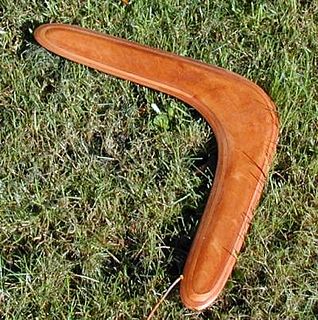 W
WA boomerang is a thrown tool, typically constructed as a flat airfoil, that is designed to spin about an axis perpendicular to the direction of its flight. A returning boomerang is designed to return to the thrower. It is well known as a weapon used by some Aboriginal Australian peoples for hunting.
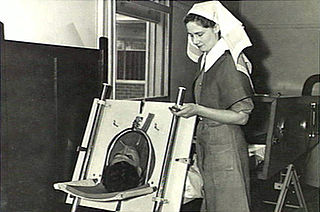 W
WThe Both respirator, also known as the Both Portable Cabinet Respirator, was a negative pressure ventilator invented by Edward Both in 1937. Made from plywood, the respirator was an affordable alternative to the more expensive designs that had been used prior to its development, and accordingly came into common usage in Australia. More widespread use emerged during the 1940s and 1950s, when the Both respirator was offered free of charge to Commonwealth hospitals by William Morris.
 W
WA box kite is a high performance kite, noted for developing relatively high lift; it is a type within the family of cellular kites. The typical design has four parallel struts. The box is made rigid with diagonal crossed struts. There are two sails, or ribbons, whose width is about a quarter of the length of the box. The ribbons wrap around the ends of the box, leaving the ends and middle of the kite open. In flight, one strut is the bottom, and the bridle is tied between the top and bottom of this strut. The dihedrals of the sails help stability.
 W
WBoxed wine is wine packaged in a bag-in-box. Wine is contained in a plastic bladder typically with an air-tight valve emerging from a protective corrugated fiberboard box. It serves as an alternative to traditional wine bottling in glass with a cork or synthetic seal.
 W
WA burkini is a type of modesty swimsuit for women. The suit covers the whole body except the face, the hands and the feet, while being light enough for swimming. The amount of skin covered is about the same as the person wearing a wetsuit and a swimming cap.
 W
WA cochlear implant (CI) is a surgically implanted neuroprosthetic device to provide a person with moderate to profound sensorineural hearing loss a modified sense of sound. CI bypasses the normal acoustic hearing process to replace it with electric signals which directly stimulate the auditory nerve. A person with a cochlear implant receiving intensive auditory training may learn to interpret those signals as sound and speech. However, one third of deaf children do not develop language if they are on a CI program alone and have no sign language input.
 W
WThe Coolgardie safe is a low-tech food storage unit, using evaporative cooling to prolong the life of whatever edibles are kept in it. It applies the basic principle of heat transfer which occurs during evaporation of water. It was named after the place where it was invented – the small mining town of Coolgardie, Western Australia, near Kalgoorlie-Boulder.
 W
WA cork hat is a type of headgear with corks strung from the brim, to ward off insects.
 W
WA cultivator is any of several types of farm implement used for secondary tillage. One sense of the name refers to frames with teeth that pierce the soil as they are dragged through it linearly. Another sense refers to machines that use rotary motion of disks or teeth to accomplish a similar result. The rotary tiller is a principal example.
 W
WThe Dethridge wheel is used throughout Australia and in many other countries, including the United States, Israel and in Africa, to measure the flow of water delivered to farms for irrigation. The wheel was invented by John Dethridge in Australia in 1910. Dethridge was then commissioner for the State Rivers and Water Supply Commission of Victoria.
 W
WA dillybag or dilly bag is a traditional Australian Aboriginal bag, generally woven from the fibres of plant species of the Pandanus genus.. It is used for a variety of food transportation and preparation purposes.
 W
WA dual-flush toilet is a variation of the flush toilet that uses two buttons or a handle mechanism to flush different amounts of water. A lesser amount of water is designed to flush liquid waste and the larger quantity of water designed to flush solid waste.
 W
WThe Easter Bilby is an Australian alternative to the Easter Bunny.
 W
WAn electric drill is a drill which is driven by an electric motor. The invention of the electric drill is credited to Arthur James Arnot and William Blanch Brain of Melbourne, Australia who patented the electric drill in 1889. In 1895, the first portable handheld drill was created by brothers Wilhelm & Carl Fein of Stuttgart, Germany. In 1917 the first trigger-switch, pistol-grip portable drill was patented by Black & Decker.
 W
WA flame ionization detector (FID) is a scientific instrument that measures analytes in a gas stream. It is frequently used as a detector in gas chromatography. The measurement of ion per unit time make this a mass sensitive instrument. Standalone FIDs can also be used in applications such as landfill gas monitoring, fugitive emissions monitoring and internal combustion engine emissions measurement in stationary or portable instruments.
 W
WA flat white is a coffee drink consisting of espresso with microfoam. It is comparable to a latte, but smaller in volume and with less microfoam, therefore having a higher proportion of coffee to milk, and milk that is more velvety in consistency – allowing the espresso to dominate the flavour, while being supported by the milk.
 W
WA flight recorder is an electronic recording device placed in an aircraft for the purpose of facilitating the investigation of aviation accidents and incidents. Flight recorders are also known by the misnomer black box—they are, in fact, painted bright orange in color to aid in their recovery after accidents.
 W
WThe Frazier lens is a special camera lens designed by Australian photographer Jim Frazier. The Frazier lens provides an appearance of a massive depth of field, allowing the foreground and background of an image to be in focus. Frazier's lenses have been widely used in Hollywood and wildlife cinematography. In addition to its unique depth of field properties, the Frazier lens is significantly smaller than previous deep focus lenses allowing more versatility and flexibility to cinematographers. The main feature of the lens, an extended tube with a rotating prism, allows cinematographers to place the camera in a variety of positions for a given shot. Cinematographers then rotate the prism to correct the horizon. This feature allows directors and cameramen to achieve shots in minutes that previously took cinematographers hours in rigging and designing special sets to accommodate shooting positions.
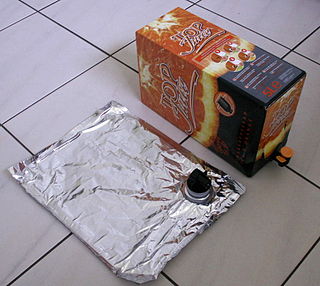 W
WGoon of Fortune is an Australian and New Zealand drinking game involving cheap cask wine, played between any number of individual people. The name of the game is a spoof on the TV show Wheel of Fortune.
 W
WA Hills Hoist is a height-adjustable rotary clothes line, designed to permit the compact hanging of wet clothes so that their maximum area can be exposed for wind drying by rotation.
 W
WThe Jindalee Operational Radar Network (JORN) is an over-the-horizon radar (OTHR) network that can monitor air and sea movements across 37,000 km2. It has a normal operating range of 1,000 km to 3,000 km. It is used in the defence of Australia, and can also monitor maritime operations, wave heights and wind directions.
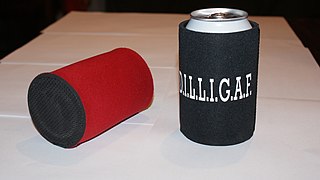 W
WA koozie, stubby holder (Australian) is a fabric or foam sleeve that is designed to thermally insulate a beverage container, like a can or bottle.
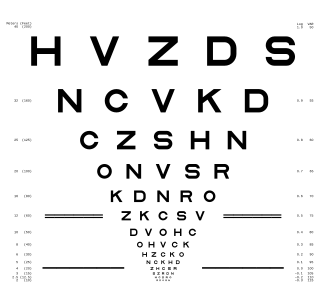 W
WA logMAR chart is a chart consisting of rows of letters that is used by ophthalmologists, orthoptists, optometrists, and vision scientists to estimate visual acuity. The chart was developed at the National Vision Research Institute of Australia in 1976, and is designed to enable a more accurate estimate of acuity than do other charts. For this reason, the LogMAR chart is recommended, particularly in a research setting.
 W
WThe Multi-shot Accessory Underbarrel Launcher, or MAUL, is a combat shotgun designed by defunct Brisbane-based company Metal Storm.
 W
WMorse Micro is a Sydney-based developer of Wi-Fi HaLow microprocessors. The chips use low-bandwidth wireless network protocols in the sub 1 GHz spectrum, enabling high data rates of 10 megabits per second, at a range of 1,000 metres. The Australian Government provided them with seed funding in 2017 as they believed Morse Micro has the “first WiFi HaLow silicon chip that securely connects smart devices over long distances.” The company says the main application of their technology is machine-to-machine communications, which is “expanding Wi-Fi so it can go into everything, every smoke alarm, every camera." In May 2019, Series A funding was provided in by a suite of investors including the CSIRO Innovation Fund, part of the Australian scientific research agency credited with inventing Wi-Fi in 1997.
 W
WA notebook is a book or stack of paper pages that are often ruled and used for purposes such as recording notes or memoranda, other writing, drawing or scrapbooking.
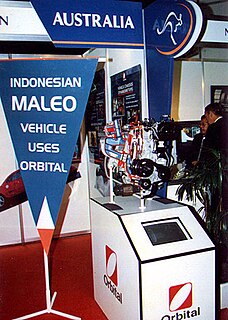 W
WThe Sarich orbital engine is a type of internal combustion engine, invented in 1972 by Ralph Sarich, an engineer from Perth, Australia, which features orbital rather than reciprocating motion of its internal parts. It differs from the conceptually similar Wankel engine by using a generally prismatic shaped rotor that orbits the axis of the engine, without rotation, rather than the rotating trilobular rotor of the Wankel.
 W
WPermaculture is an approach to land management that adopts arrangements observed in flourishing natural ecosystems. It includes a set of design principles derived using whole systems thinking. It uses these principles in fields such as regenerative agriculture, rewilding, and community resilience.
 W
WA pie iron—also called pudgy pie iron, sandwich toaster, snackwicher, jaffle iron, or toastie iron—is a cooking appliance that consists of two hinged concave, round or square, cast iron or aluminium plates on long handles. Its "clamshell" design resembles that of a waffle iron, but without that appliance's honeycomb pattern. Pie irons are used to heat, toast and seal a sandwich—typically called a toastie or a Breville—consisting of two slices of bread enclosing a filling.
 W
WPlain tobacco packaging, also known as generic, neutral, standardised or homogeneous packaging, is packaging of tobacco products, typically cigarettes, without any branding, including only the brand name in a mandated size, font and place on the pack, in addition to the health warnings and any other legally mandated information such as toxic constituents and tax-paid stamps. The appearance of all tobacco packs is standardised, including the colour of the pack.
 W
WPlanking is an activity consisting of lying in a face down position, sometimes in an unusual or incongruous location. The palms of the hands are typically touching the sides of the body and the toes are typically touching the ground. Some players compete to find the most unusual and original location in which to play. The term planking refers to mimicking a wooden plank. Planking can include lying flat on a flat surface, or holding the body flat while it is supported in only some regions, with other parts of the body suspended. Many participants in planking have photographed the activity in unusual locations and have shared such pictures through social media.
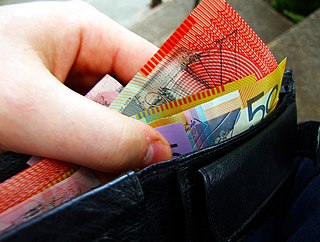 W
WPolymer banknotes are banknotes made from a synthetic polymer such as biaxially oriented polypropylene (BOPP). Such notes incorporate many security features not available in paper banknotes, including the use of metameric inks. Polymer banknotes last significantly longer than paper notes, causing a decrease in environmental impact and a reduced cost of production and replacement. Modern polymer banknotes were first developed by the Reserve Bank of Australia (RBA), Commonwealth Scientific and Industrial Research Organisation (CSIRO) and The University of Melbourne. They were first issued as currency in Australia during 1988. In 1996 Australia switched completely to polymer banknotes. Romania was the first country in Europe to issue a plastic note in 1999 and became the third country after Australia and New Zealand to fully convert to polymer by 2003.
 W
WPossum-skin cloaks were a form of clothing worn by Aboriginal people in the south-east of Australia – present-day Victoria and New South Wales.
 W
WA power strip is a block of electrical sockets that attaches to the end of a flexible cable, allowing multiple electrical devices to be powered from a single electrical socket. Power strips are often used when many electrical devices are in proximity, such as for audio, video, computer systems, appliances, power tools, and lighting. Power strips often include a circuit breaker to interrupt the electric current in case of an overload or a short circuit. Some power strips provide protection against electrical power surges. Typical housing styles include strip, rack-mount, under-monitor and direct plug-in.
 W
WIn quantum computing and specifically the quantum circuit model of computation, a quantum logic gate is a basic quantum circuit operating on a small number of qubits. They are the building blocks of quantum circuits, like classical logic gates are for conventional digital circuits.
 W
WA record changer or autochanger is a device that plays multiple phonograph records in sequence without user intervention. Record changers first appeared in the late 1920s, and were common until the 1980s.
 W
WA refrigerator is a home appliance consisting of a thermally insulated compartment and a heat pump that transfers heat from its inside to its external environment so that its inside is cooled to a temperature below the room temperature. Refrigeration is an essential food storage technique in developed countries. The lower temperature lowers the reproduction rate of bacteria, so the refrigerator reduces the rate of spoilage. A refrigerator maintains a temperature a few degrees above the freezing point of water. Optimum temperature range for perishable food storage is 3 to 5 °C. A similar device that maintains a temperature below the freezing point of water is called a freezer. The refrigerator replaced the icebox, which had been a common household appliance for almost a century and a half.
 W
WA scramjet is a variant of a ramjet airbreathing jet engine in which combustion takes place in supersonic airflow. As in ramjets, a scramjet relies on high vehicle speed to compress the incoming air forcefully before combustion, but whereas a ramjet decelerates the air to subsonic velocities before combustion, the airflow in a scramjet is supersonic throughout the entire engine. That allows the scramjet to operate efficiently at extremely high speeds.
 W
WA Splayd is an eating utensil combining the functions of spoon, knife and fork. It was created by William McArthur in the 1940s in Sydney, New South Wales, Australia. There are several manufacturers.
 W
WStarting blocks are a device used in the sport of track and field by sprint athletes to brace their feet against at the start of a race so they do not slip as they stride forwards at the sound of the starter's pistol. The blocks also enable the sprinters to adopt a more efficient starting posture and isometrically preload their muscles in an enhanced manner. This allows them to start more powerfully and increases their overall sprint speed capability.
 W
WA Stobie pole is a power line pole made of two steel joists held apart by a slab of concrete. It was invented by Adelaide Electric Supply Company engineer James Cyril Stobie (1895–1953). Stobie used readily available materials due to the shortage of suitably long, strong, straight and termite-resistant timber in South Australia.
 W
WThe stump-jump plough is a kind of plough invented in South Australia in the late 19th century by Richard Bowyer Smith and Clarence Herbert Smith to solve the particular problem of preparing mallee lands for cultivation.
 W
WA surfski is a type of kayak in the kayaking "family" of paddling craft. It is generally the longest of all kayaks and is a performance oriented kayak designed for speed on open water. The distinguishing characteristic of a surfski is that it is primarily used for performance paddling in open water, most commonly the ocean, although it is well suited to all bodies of water and recreational paddling. The most common use of surfskis is in surf lifesaving competitions and downwind paddling.
 W
WA swim brief or racing brief is any briefs-style male swimsuit such as those worn in competitive swimming, diving and water polo. The popularity of the Australian Speedo brand racing brief has led to the use of its name in many countries around the world to refer to any racing brief, regardless of the maker. Occasionally, the Speedo genericized trademark also applies to square cut swimsuit, but in general the generic term is used in reference to swim briefs. Swim briefs are also referred to as competition briefs, swimming trunks, bathers, racer bathers, posing briefs, racing briefs, and colloquially in Australia as "budgie smugglers".
 W
WUgg boots are a unisex style of sheepskin boot originating in Australia. The boots are typically made of twin-faced sheepskin with fleece on the inside, a tanned outer surface and a synthetic sole. The term "ugg boots" originated in Australia, initially for utilitarian footwear worn for warmth, and which were often worn by surfers during the 1960s. In the 1970s, the boots were introduced to the surf culture of the United Kingdom and the United States. Sheepskin boots became a fashion trend in the U.S. in the late 1990s and as a worldwide trend in the mid-2000s. In Australia, they are worn predominantly as slippers and often associated with "daggy" fashion sense and "bogan" culture.
 W
WVicta is an Australian manufacturer of outdoor garden equipment, including petrol and electric lawn mowers, edgers, trimmers, and chainsaws. They manufacture these in petrol & lithium-ion powered variants. However, Victa remains most well known for the Victa Lawn Mower.
 W
WA waddy, nulla nulla or hunting stick is an Aboriginal Australian club for use in hunting and fighting. The first of these names comes from the Darug people of Port Jackson, Sydney.
 W
WWi-Fi is a family of wireless network protocols, based on the IEEE 802.11 family of standards, which are commonly used for local area networking of devices and Internet access. Wi‑Fi is a trademark of the non-profit Wi-Fi Alliance, which restricts the use of the term Wi-Fi Certified to products that successfully complete interoperability certification testing. As of 2017, the Wi-Fi Alliance consisted of more than 800 companies from around the world. As of 2019, over 3.05 billion Wi-Fi enabled devices are shipped globally each year. Devices that can use Wi-Fi technologies include personal computer desktops and laptops, smartphones and tablets, smart TVs, printers, smart speakers, cars, and drones.
 W
WThe winged keel is a sailboat keel layout first fitted on the 12-metre class yacht Australia II, 1983 America's Cup winner.
 W
WA woomera is a wooden Australian Aboriginal spear-throwing device. Similar to an atlatl, it serves as an extension of the human arm, enabling a spear to travel at a greater speed and force than possible with only the arm.